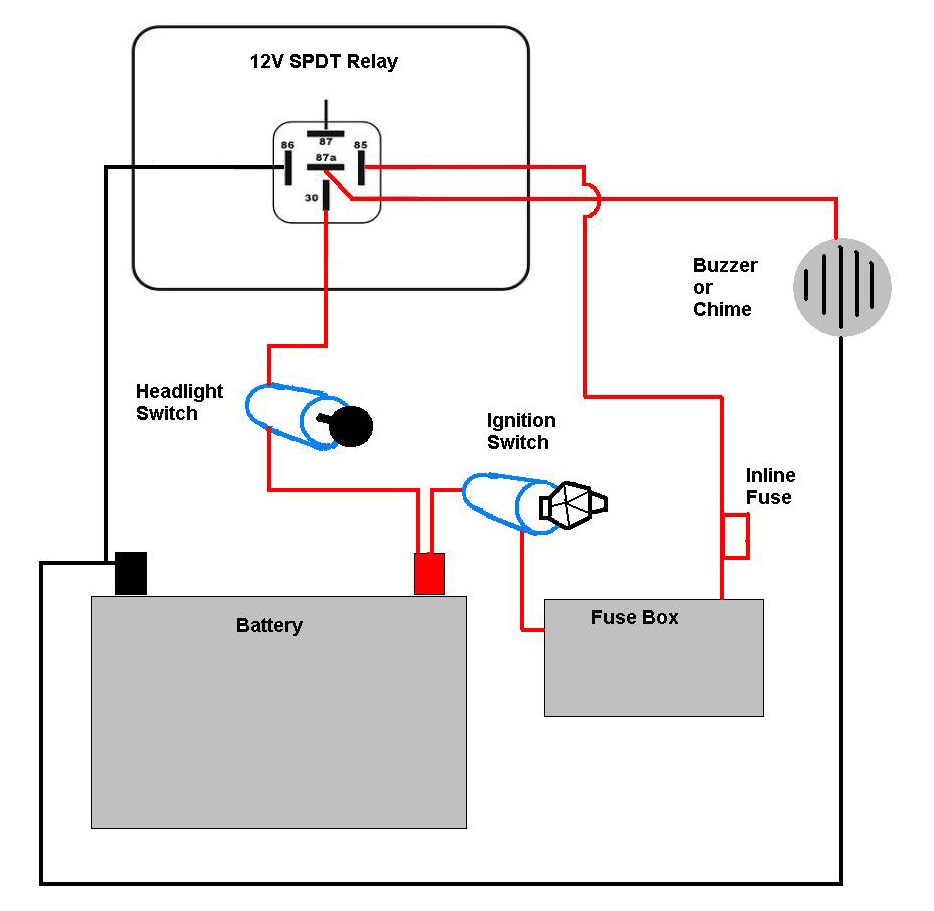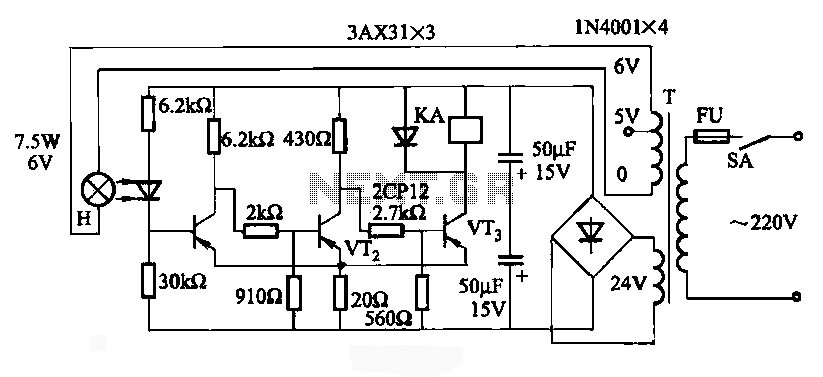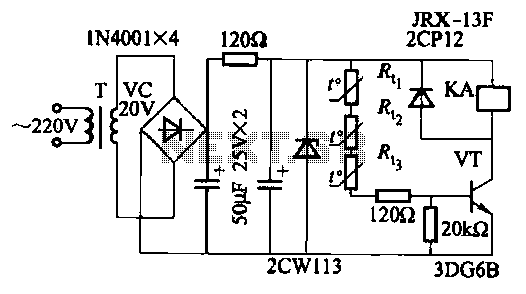
4011 For Protection Surge With Delay The Relay

The function of this circuit is to prevent equipment damage caused by pressure and to provide a delay for other appliances connected to the output of the relay. The circuit includes components such as a 4011 IC, a diode, and a relay.
This circuit is designed to protect sensitive equipment from pressure-related damage while simultaneously managing the operation of additional appliances through a relay mechanism. The 4011 IC, a quad 2-input NAND gate, is utilized to process input signals and control the relay's operation.
The circuit may be configured to monitor pressure levels using a pressure sensor, which outputs a signal to the 4011 IC. When the pressure exceeds a predetermined threshold, the NAND gate logic can trigger the relay, disconnecting the load to prevent damage. The inclusion of a diode is critical as it protects the circuit from back EMF generated by the relay coil when it is de-energized, ensuring reliable operation and longevity of the components.
The delay function for the appliances is achieved through the timing characteristics of the circuit, which can be adjusted by incorporating resistors and capacitors in conjunction with the 4011 IC. This allows for a controlled delay before the relay reactivates the appliances, providing a buffer period that can help in managing sudden pressure changes or system recovery after an event.
Overall, this circuit serves dual purposes: safeguarding equipment from pressure-induced failure and enabling delayed operation of connected devices, thus enhancing the overall reliability and efficiency of the system.Function: To prevent equipment damage from pressure., and for delay other appliances connected to the output of the relay. 4011 IC, Diode, Relay, .. 🔗 External reference
This circuit is designed to protect sensitive equipment from pressure-related damage while simultaneously managing the operation of additional appliances through a relay mechanism. The 4011 IC, a quad 2-input NAND gate, is utilized to process input signals and control the relay's operation.
The circuit may be configured to monitor pressure levels using a pressure sensor, which outputs a signal to the 4011 IC. When the pressure exceeds a predetermined threshold, the NAND gate logic can trigger the relay, disconnecting the load to prevent damage. The inclusion of a diode is critical as it protects the circuit from back EMF generated by the relay coil when it is de-energized, ensuring reliable operation and longevity of the components.
The delay function for the appliances is achieved through the timing characteristics of the circuit, which can be adjusted by incorporating resistors and capacitors in conjunction with the 4011 IC. This allows for a controlled delay before the relay reactivates the appliances, providing a buffer period that can help in managing sudden pressure changes or system recovery after an event.
Overall, this circuit serves dual purposes: safeguarding equipment from pressure-induced failure and enabling delayed operation of connected devices, thus enhancing the overall reliability and efficiency of the system.Function: To prevent equipment damage from pressure., and for delay other appliances connected to the output of the relay. 4011 IC, Diode, Relay, .. 🔗 External reference





